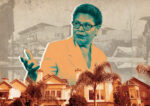Trending
Public sector could drive green building wave
More and more residential homeowners and companies are taking steps to make their homes and office buildings energy-efficient and environmentally friendly. As the brakes remain clamped on the economy and the construction industry, public sector action might be the factor that makes green construction not just widespread, but cost effective.
“What we’ve noticed is there is more of an awareness of green building when you talk to clients about it,” said Oscar Corral, project manager at Grandhaus, a certified green construction company in Miami. “Clients no longer look at you like you have horns growing out of your head. They’re familiar with the concept. What we have are clients who may be interested in certain elements of green building, like more efficient plumbing, sinks, like lamps that accommodate LED lighting.”
Corral said South Florida has an interesting dilemma because LEED (the U.S. Green Building Council’s certification), one of the most prominent green construction licenses, conflicts with much of the South Florida building code.
That means the public sector will ultimately make green buildings common and affordable, by increasing demand and awareness, said Chad Londos, estimator at Cabrera Construction.
“LEED is really catching on, and municipalities are starting to mandate it for public buildings. It’s just a matter of time before the private sector finds out that it can be done. Once the public sector goes that way — you’re going to have more manufacturers, more suppliers, more vendors, who will be adjusted to it.”
Since 2006, the Miami Green Commission has been one of Miami Mayor Carlos Alvarez’s policy initiatives, aiming at increasing green building practices in the city, specifically by using LEED standards as a guide for the municipal buildings.
Corral said private projects are concerned about costs first.
“Many of the LEED recommendations for buildings come against the South Florida building code, which requires cinder block, concrete, and very harsh materials for hurricane preparedness, and so LEED doesn’t always translate well,” he said. “What you detect here are people who want to use less energy in their homes, use less water to irrigate their plants. Although the demand for all kinds of construction is down, when things bounce back, green building is going to lead the demand in the future.”
Better to adapt, some builders say. Grandhaus is an example of many companies who are not primarily green builders, but who have acquired certifications from LEED and Green Globes, a program of the Green Buildings Initiative, to branch out and increase business.
“It’s not a bad idea for construction companies to recognize that this is going to be a trend in the future. It’s going to be the norm.”
Even with the slowdown, marketing buildings as green is a more common tactic, said Londos, who began doing green construction work around June 2008.
“To do green work you have to do additional expenditures up front, if you go with one of the top accreditation and certifications like LEED. It depends on whether you’re talking about fully going green, or people getting informed and wanting to cut down on their use of resources — that isn’t slowing down, that’s a thing that’s coming that owners are definitely trying to incorporate.”
Londos said that right now, as the cost of certification is high and the economy is slow, people are opting to include green improvements without doing full-on green certification.
“There are a lot of ways to put green aspects into your building without accruing the additional cost of certification,” says Londos. “There are things that can be done that are at no additional cost — it’s not hard to set up a recycling program in a building, to put in a closet for recycling.”




